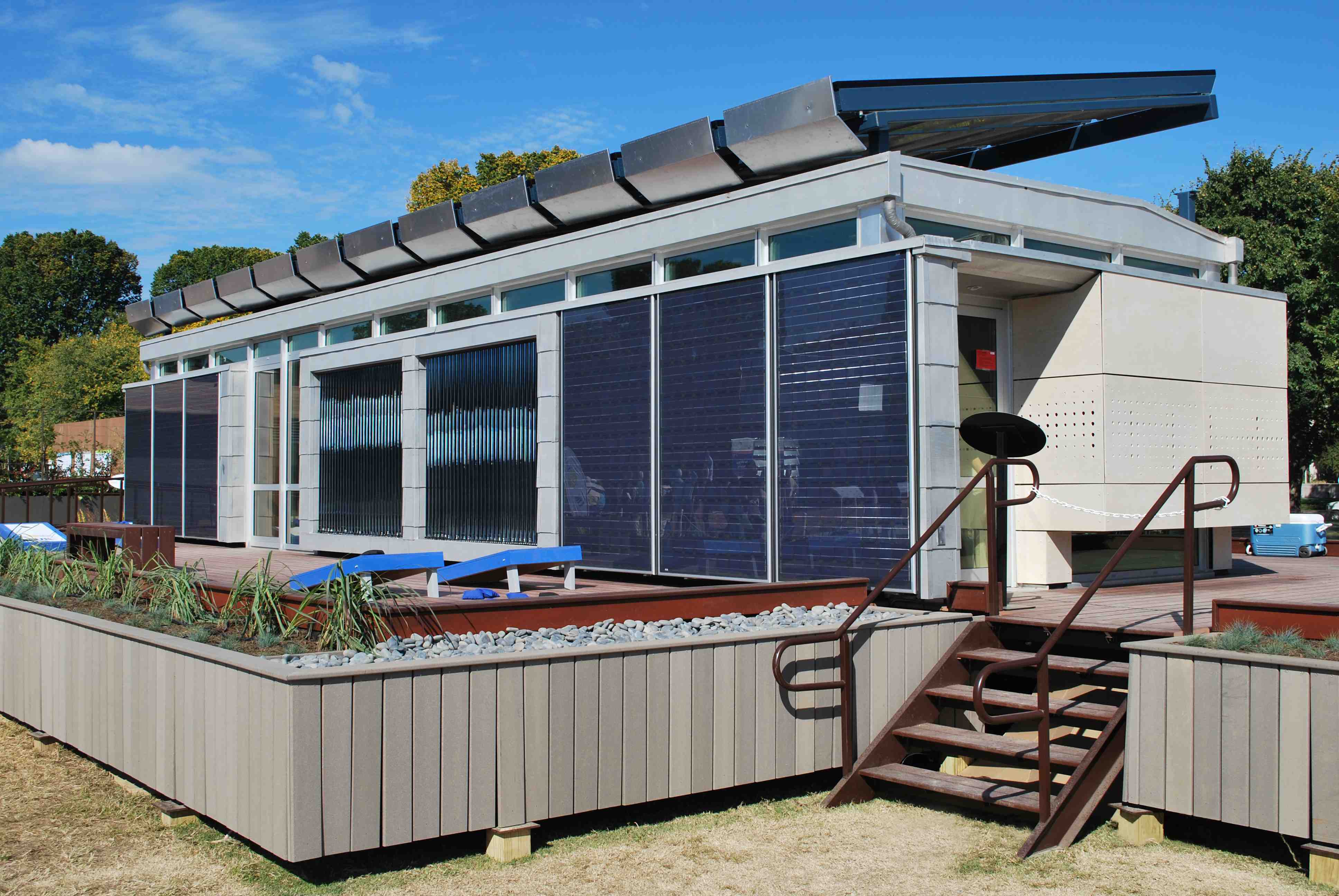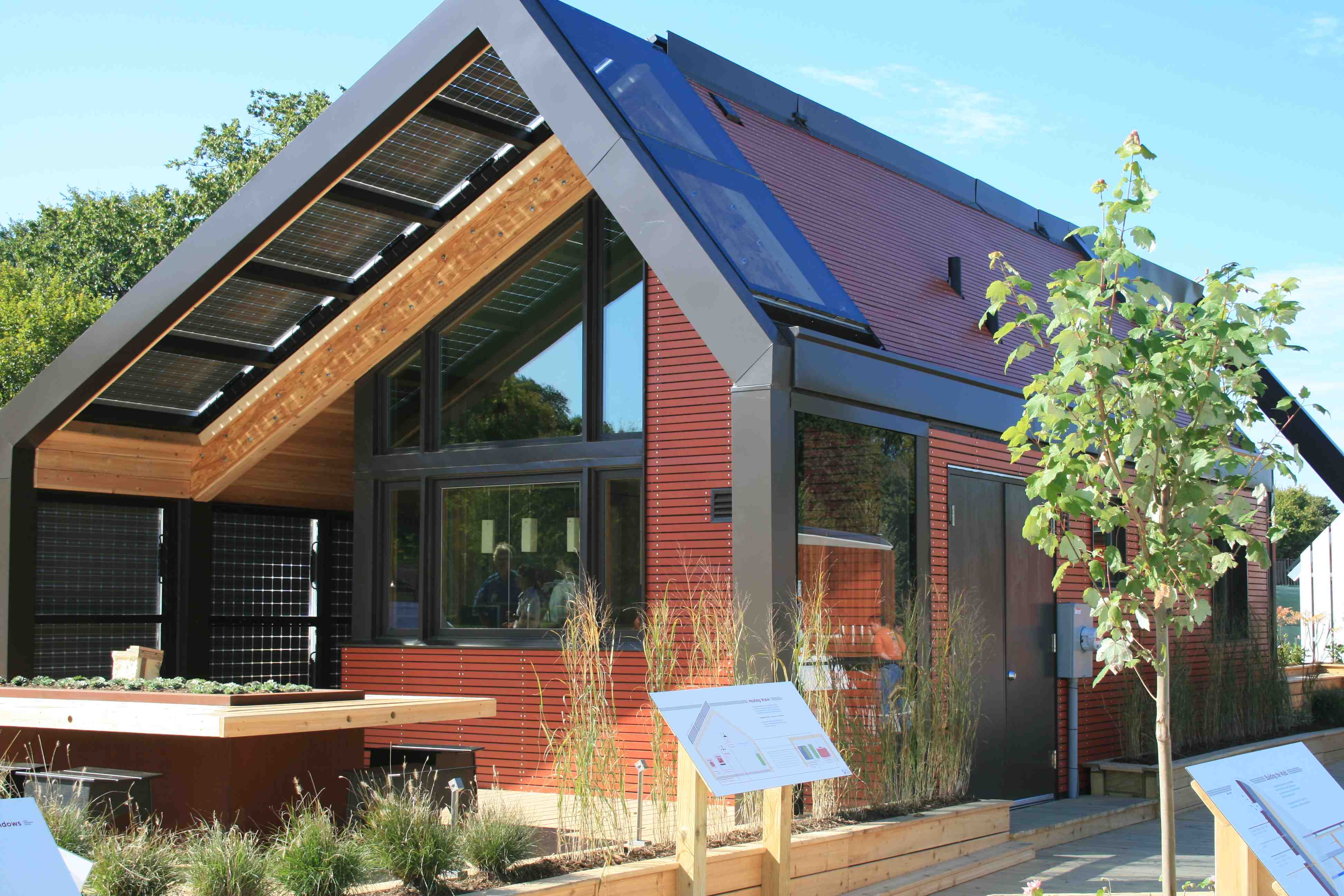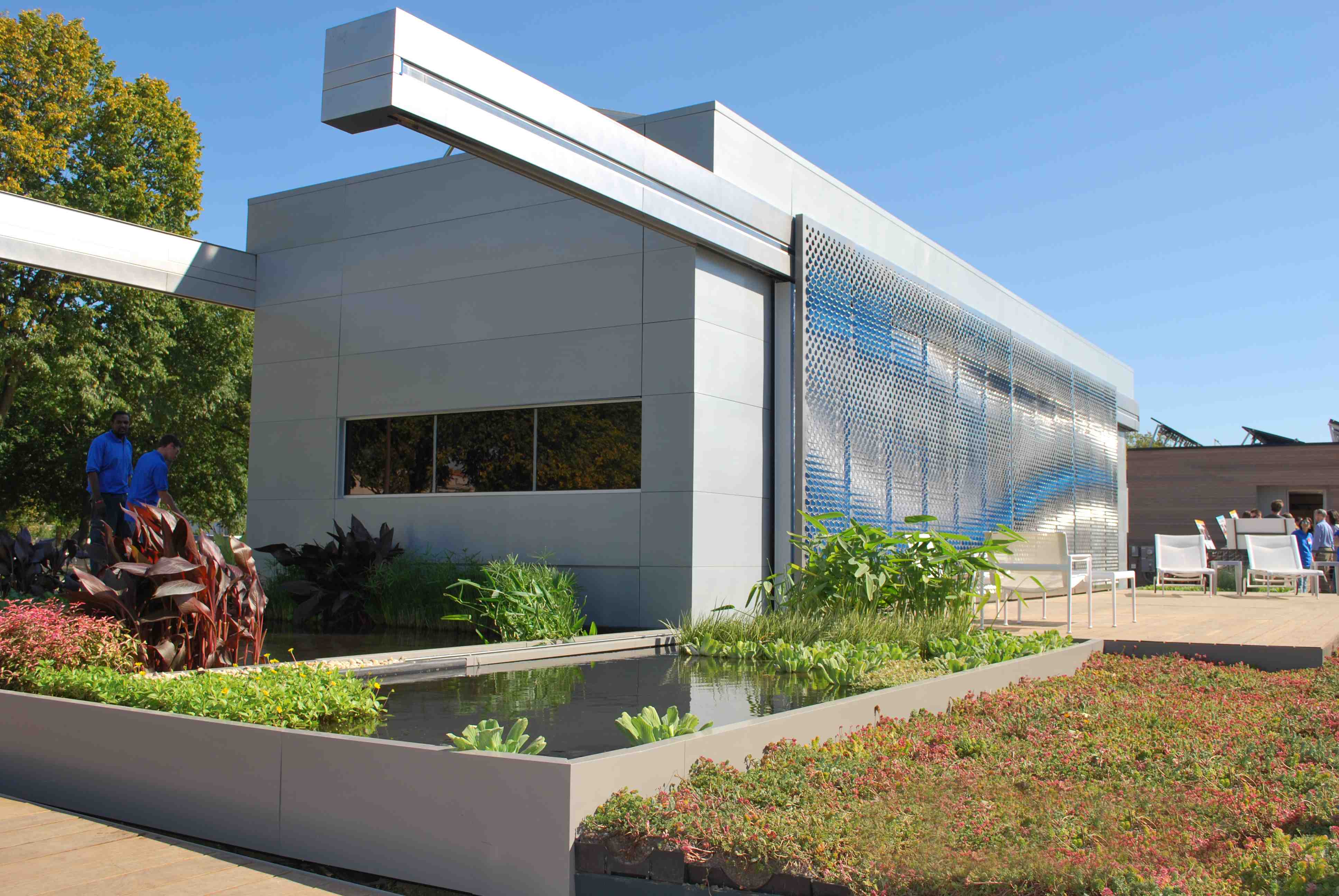Client News 11/12/09
Three Solar Decathlon entries feature SageGlass products for innovative, solar control
Sponsored by the U.S. Department of Energy and its National Renewable Energy Laboratory, the Solar Decathlon takes place in Washington, D.C., every two years and challenges university teams around the world to build and operate the most efficient, solar-powered, attractive and market-viable home. Many factors go into designing and building the homes, but core among them is the use and management of the sun’s light and energy.
Offering convenient control of sunlight and heat gain, SAGE Electrochromics‘ innovative, electronically tintable glass is featured in three Solar Decathlon houses: the University of Kentucky at Lexington, the University of Minnesota in Minneapolis, and the Virginia Polytechnic Institute and State University (Virginia Tech) in Blacksburg.
The University of Kentucky’s “s.ky blue” house uses an integrated control system to coordinate the interior lights and SageGlass glazing system for maximum efficiency.
The University of Minnesota, whose entry was named “ICON” house for its traditional iconic house shape, presented new technologies in a familiar, consumer-accessible form. The team incorporated SageGlass glazing into the east- and west-facing windows of the house.
Virginia Tech’s offering, “LUMENHAUS,” dynamically adjusts to maximize daylighting. The north and south elevations of the house feature moving walls, while the west elevation features SageGlass windows.
Energy-efficient SageGlass products contribute to several of the competition’s 10 contest categories (that give the “Decathlon” its name) for which the houses are evaluated:
1. Architecture – Design and imagination
2. Market Viability – Marketability for a selected building region
3. Engineering – Functionality and efficiency
4. Lighting Design – Lighting functionality and energy-efficiency, including daylighting
5. Communications – A team’s communication via Web site, open houses
6. Comfort Zone – The house’s ability to maintain a livable temperature
7. Hot Water – The house’s ability to provide consistent hot water
8. Appliances – The functionality and consistency of typical household appliances
9. Home Entertainment – The house’s modern entertainment offerings
10. Net Metering – The house’s net electrical production or use
SageGlass products change from clear to a highly tinted state, which minimizes unwanted solar heat gain, protects interior furnishings from fading, and preserves the residents’ view outside. Management of the electronic tinting glass can be integrated with a home’s HVAC system for automated control, can be operated by a separate switch, or can be controlled remotely such as by computer or iPhone as demonstrated by Virginia Tech’s Solar Decathlon entry.
Only a small amount of electricity is needed to power electrochromic glass; 150-square-feet of SageGlass windows use less electricity than an average compact fluorescent bulb. In the Solar Decathlon houses this power is supplied by photovoltaic panels mounted on the outside of the building. The ultimate goal for a house in this competition is to be a net-producer of electricity, although most teams were satisfied with achieving net-zero energy status. Each university team worked for nearly two years to produce its 800-square-foot house.
The Solar Decathlon ended on October 18, with Team Germany winning the competition. Minnesota finishes in fifth place overall, with first place rankings in the Engineering and Lighting Design categories. Kentucky finishes in ninth place with a fifth place ranking in Net Metering. Finishing in 13th place overall with a third place rank in the Architecture category, Virginia Tech’s LUMENHAUS continues on to the international solar decathlon competition as the only house from the U.S. competition competing there.
###
Filed under: CLIENT NEWS


